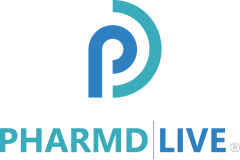Change is a necessary force in rebalancing systems. Even a tiny application of change can yield substantial effects over time. Americans are changing how we approach healthcare reimbursement and compensation from a solid “Fee For Service” (FFS) tradition to a Value-Based Care (VBC) model. “All physicians are familiar with the physician fee schedule (PFS) model of compensation, employed by both Medicare and private insurance carriers. Under this model, payors offer a set fee for the physician, listed in the schedule for a specific service. This FFS model is essentially compensation based on productivity: The more services the physician provides, the more he/she bills, the more the physician earns.”1 Physicians’ compensation is already beginning to move away from the fee-for-service model. While FFS traditionally worked and had upsides, it was partly blamed for the stratospheric escalation of medical billings during Managed Care in the end of the 20th Century.
Value-Based Care is not as complicated as it sounds. “The Affordable Care Act (ACA) in 2010 was the first legislation to make mention of the change to Value-Based Care.”2 However, the changes took nearly a decade to implement. . FFS theoretically caused physicians to emphasize the number of procedures and patients, which led to suspicions that FFS was driving up medicine’s overall cost. . “Value-Based Care is a ‘new’ healthcare payment model that shifts medical provider’s reimbursement from Fee-for-Service to Fee-for-Value, with value defined as care quality, cost, efficiency, and effectiveness. Physician reimbursement will be tied directly to care quality, patient outcomes and overall cost-efficiency, rather than to the act of performing tests or procedures — i.e., physicians will only receive full reimbursement from insurers for effective care.”
The Merit-based Incentive Program System (MIPS) is one of two payment tracks under the Quality Payment Program (QPP). The other compensation track is Value-Based Care (VBC). There is some expectation that VBC may drive down patient billings. It may be more accurate to say that billings might remain flat for some time .
VBC should have the effect of reallocating a practice’s time, focusing on optimizing care instead of numbers. FFS was adequate, but VBC will drive clinical quality. As you will see in this analysis, compensation will not differ significantly under VBC. The new model proposes that physicians spend more time with the elderly and the chronically ill, especially those age 65 and older. This change will lower the morbidity of those groups and reduce their likelihood of ER or hospital visits. Physicians (expert caregivers) can concentrate on improving outcomes for these high-risk patients. In turn, they will see improved Quality Payment Program (QPP) measures in their practices.
When high-risk patients are under an expert and watchful eye, metrics such as “hospital readmissions” can improve for patients on four or more drugs. Overprescribing is out of control and everyone involved needs to check and check again. With this change of focus in mind, let’s talk briefly about designing a VBC compensation plan.
Constructing a compensation plan to motivate and reward physicians and other staff can be straightforward. “There are many factors to consider when selecting quality metrics, but best practices are measures that drive desired physician performance improvement to those that influence reimbursement. Maintain a coordinated strategy for quality metrics…to ensure payer requirements overlap and focus on a low number of measures.”3 Creating only a few metrics is the best way to keep staff focused and motivated. Practices want them to succeed and be optimistic about the new measures. “Value-based performance incentives are most often tied to quality measures, chosen by a collaboratively derived physician committee.”4 It is essential to include the ability for staff to achieve full or half credit on quality measures.
We encountered several sample compensation plans online. The most common element in those plans is that 80% of compensation is positioned to be guaranteed. Incentives on various metrics can allow staff to earn back the remaining 20%. Administrators are working with physicians so that they are reasonably able to earn what they earned under FFS. There does not seem to be a punitive nature to the new compensation. One consideration is that practices are measured on the whole, not on the contributions of individual physicians. But are there ways to improve the viability of the entire practice?
One way that we have alluded to here relates to elderly patients with more than one chronic illness. Among your practice, these patients tend to be 65 and older, standing out because of their polypharmacy and frequency of hospitalizations. What if there was a way to protect their health? What would that do to your quality measures? Chronic Care Management (CCM), is a Medicare program that can improve 80 different MIPS measures while improving the health of the age 65 and older population. The priority of CCM is to provide special attention and medication management to this at-risk population. Because this group typically takes multiple medications, increased medical oversight is indicated and recommended by Medicare. Medicare has announced billing codes for CCM patient care intended to occur between their regular office visits. CCM patients can receive remote care through telehealth, or other technology, from doctors, advanced practice registered nurses and other practitioners. CCM partner companies can handle the regular care and monitoring of these patients. A number of firms offer CCM outsourcing. One company, PharmD Live®, specifically employs clinical pharmacists as direct care providers. Pharmacists are highly trained in medication management to ward off Adverse Drug Events (ADEs). The PharmD Live pharmacy team uses proprietary Artificial Intelligence software to find impending ADEs and disease care gaps. Since medication is key to chronic care, their staff focuses on improving medication management and adherence.
PharmD Live’s pharmacy staff assists the patient where they are: at home, in a facility, or in transition. Keep in mind that many medication errors happen when patients move. PharmD Live’s CCM solution reinforces the physicians’ treatment plan and instructions to their patients. Our CCM goals are to improve patients’ health and bolster ties to their physicians. PharmD Live engages with the patient to create health goals to be included in a Care Plan for the patient that are billable to Medicare. In summary, the increased attention of CCM is life-improving and enables the patient to spend more time at home with loved ones. Taken further, CCM, under Value-Based Care, will improve practice quality scores and increase compensation opportunities.
Medicare studies have shown that CCM creates better outcomes. VBC is already rewarding better outcomes. CCM means an additional profitable revenue stream for practitioners. PharmD Live’s technology is HIPAA-compliant and enables a bi-directional patient data flow in real-time. PharmD Live’s implementation team is experienced and will set up CCM care with minimum disruption. If you have barriers to starting CCM, like limited time or technology, PharmD Live can help your practice succeed. We provide optimal healthcare with efficiency, sensitivity, and the right telehealth solutions. CCM is a way to increase MIPS Scores, VBC participation, and population health. With so many changes in healthcare, keep your practice ahead of future trends and technology. Find out about CCM with PharmD Live.
- https://www.medicaleconomics.com/view/bringing-value-based-compensation-your-medical-practice
- https://vittana.org/17-fee-for-service-pros-and-cons
- https://hbr.org/2005/07/the-balanced-scorecard-measures-that-drive-performance
- https://cokergroup.com/understanding-value-based-compensation-models/








